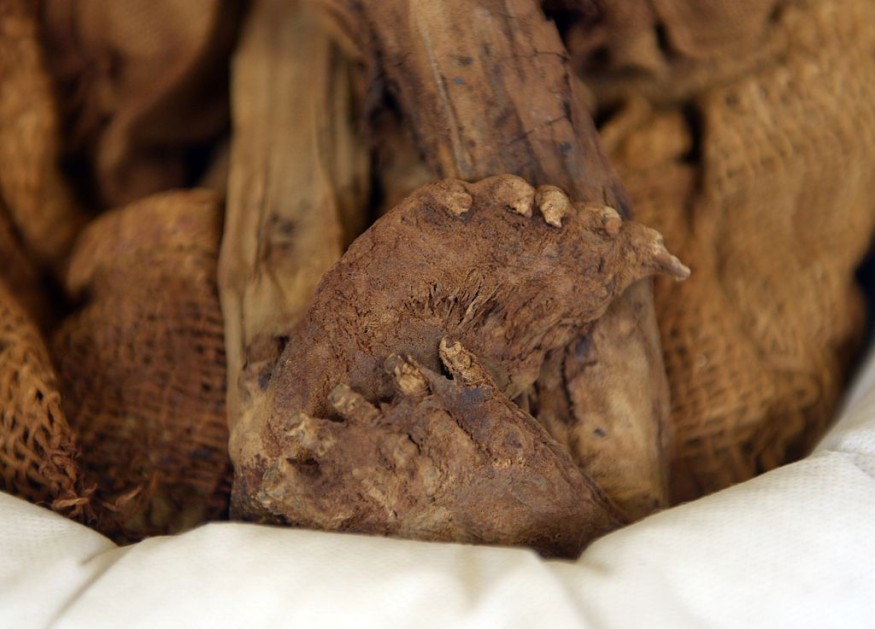According to a historian in authority of the Peruvian excavation, the six mummified children could have been a sacrifice to escort a deceased lord to the land of the souls, as the corpses were between 1,000 and 1,200 years of age.
Six Mummified Children Proof of Sacrificial Ceremony?

Child death was thought to pacify agitated divinities and bewildered opponents in primitive Peruvian societies. All through their last few archeological digs, researchers discovered 14 mummies of the pre-Inca duration, including which seemed to be 6 children.
The Six embalmed children's skeletal remains were encased in woven fabric and laid to rest in a burial site beside a wealthy man who was also a significant prominent politician is assumed to be have been dedicated early in history.
According to Live Science, researchers discovered the remains of an aristocrat bound with chains and his wrists covering his face in a burial chamber nearby Lima.
The relatively small fragments, tightly wrapped in woven fabric, were unearthed last November in the final resting place of an influential person, conceivably a prominent politician, at the Cajamarquilla bottom of the trench, about 24 kilometers east of Lima.
Moreover, archaeologist and the dig's director, Pieter Van Dalen informed AFP that the youngsters could have been close family members and then were positioned in specific components of the opening of the mausoleum of the nobleman's tomb, one on top of another.
"The youngsters, as per to our theoretical idea," Van Dalen continues, "would have also been crucified to assist the corpse to the afterlife."
Cajamarquilla was a pre-Inca metropolis constructed of sludge around 200 BCE and inhabited until around 1500. It might have housed 10,000-20,000 folks.
Children were compromised by the people of the Andes around 1000-1200 years ago, as per experts.
Child Killing During In Old Peru
Killing has been used as a ceremony by primitive Peruvian ancient cultures including the Aztecs, Mayans, and Incas, who acknowledged that it handed deceased folks to the land of the dead.
It was also presumed that forgoing grown-ups, and even sometimes youths, as in this particular instance, cajoled their agitated divinities and bewildered their adversaries.
The crew also discovered the corpses of seven individuals who have not yet been preserved, and the remnants of llamas and ceramics.
The alleged nobleman's bones were discovered last year in a burial chamber 3 meters broad and 1.4 meters underground in Cajamarquilla, one of the greatest ancient monuments around Lima. After he perished, he was only around 20 years old, and he was buried deep with his forearms hiding his face and bound up with string.
Researchers in Peru discovered indications of the largest-ever child sacrificial in 2018, unearthing the bones of much more than 140 children who were slaughtered with 200 llamas as component of a ceremonial tribute approximately 550 years ago, according to CBS News.
Investigators concluded that the youngsters would be between the ages of 5 and 14, with the majority being between the ages of 8 and twelve when they passed, with their remains interred pointing west - out to vast ocean, according to National Geographic.
"It's ritual slaughter, and it's highly methodical," noted Tulane University's John Verano, a physical anthropologist.
© 2025 NatureWorldNews.com All rights reserved. Do not reproduce without permission.





